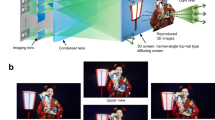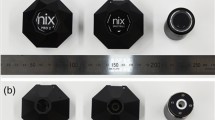Abstract
IN trying to repeat Blondlot's experiments I have met with the usual lack of success, but one experiment I have made seems worthy of record. A small quantity of radium salt was accidentally spilled upon a barium platinocyanide screen, which consequently became faintly luminous in the dark. The light was very faint, and in order to see it more clearly I placed the screen nearly in contact with the eye. On touching the back of the screen with the finger, just under the luminous patch, there was seen to be a perceptible alteration in intensity of the light.
This is a preview of subscription content, access via your institution
Access options
Subscribe to this journal
Receive 51 print issues and online access
$199.00 per year
only $3.90 per issue
Buy this article
- Purchase on Springer Link
- Instant access to full article PDF
Prices may be subject to local taxes which are calculated during checkout
Similar content being viewed by others
Author information
Authors and Affiliations
Rights and permissions
About this article
Cite this article
RUDGE, W. The n-Rays. Nature 69, 437–438 (1904). https://doi.org/10.1038/069437c0
Issue Date:
DOI: https://doi.org/10.1038/069437c0
Comments
By submitting a comment you agree to abide by our Terms and Community Guidelines. If you find something abusive or that does not comply with our terms or guidelines please flag it as inappropriate.



